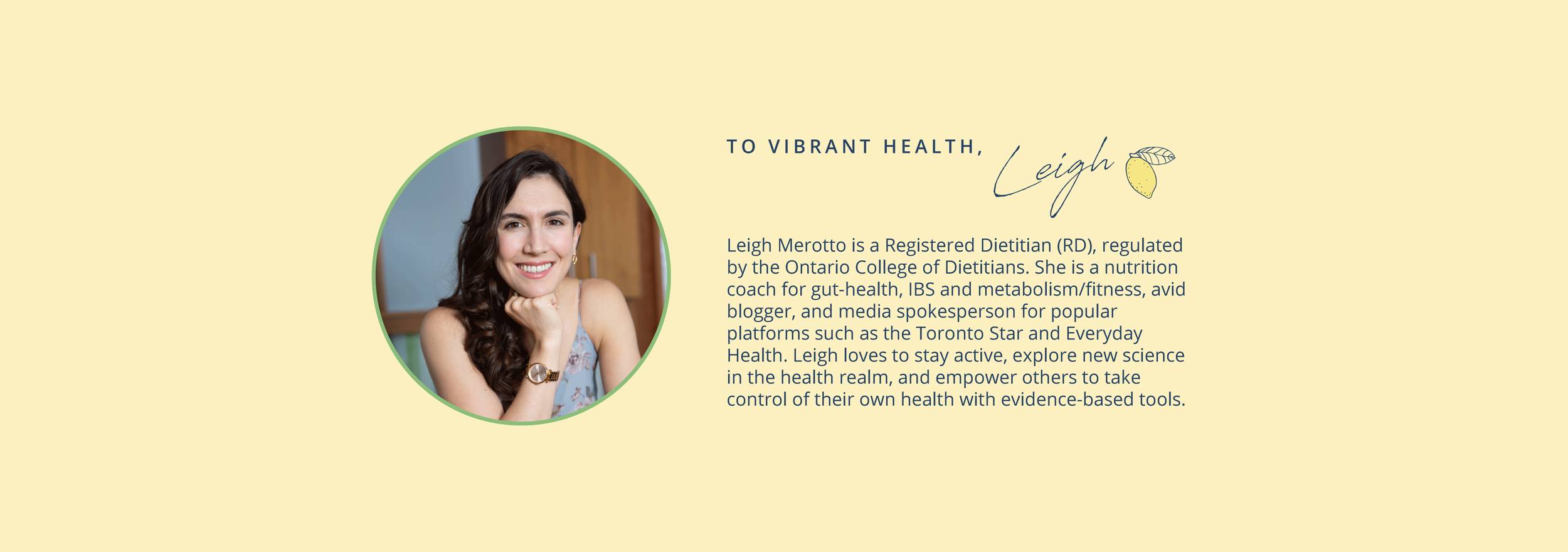A Dietitian's Advice on How to Set Successful (Health Related) Resolutions This New Year
Year after year…. Do you make new year’s resolutions you never end up achieving? If you treat the new year like a blank slate, and fill the empty page with ambitious goals you never follow through on, keep reading.
Did you know that less than 10% of people actually stick with their new year’s resolutions long-term? This is because most of us set resolutions that are unrealistic. Further, we do not spend enough time or thought planning out how we are going to achieve them.
Well, if this sounds like where you’ve been before, this post may have some key messages for you.
Should you be setting resolutions? I definitely think you should, as long as you do so with the best intentions. For most, it can be motivating to have some clear changes for self-improvement and the turn of a new year is like a fresh start.
Taking the time to reflect on the past year, and set some intentions on personal and professional intentions for the new year is something I really enjoy.
However, what I have learned in my personal life and work as a nutrition coach/dietitian, is that simple, small changes that you can be consistent with over time is really the key to success.
This new years, rather than setting unrealistic and big goals, or focusing on external/aesthetic changes only (ie. weight loss, going on a diet, signing up for 6 HIIT workouts per week at a new gym, etc.) consider mindfully choosing a few behavior changes, that you are more likely to sustain and build upon in the long term.
If you do choose to set resolutions, I recommend following these 6 steps to set off the new year on the right foot. Reaching your goals takes a bit of work, but setting better intentions to meet your resolutions this new year will make you more likely to succeed.
1. Reflect On the Past Year, Your Health & Behaviours
Write these thoughts down on a piece of paper, or in a notebook, somewhere you can refer back to them.
Ask yourself the following questions:
On a scale of 1-10, where do I classify my social, physical, spiritual, and mental health?
Which areas would I like to improve?
What healthy behaviours and habits do I currently have?
What behaviours and habits do I want to improve on or add?
2. Choose the Most Impactful Behaviour Changes
For each of your areas of health - social, physical, spiritual, and mental health - focus on adjusting 1 behavior change in each area (I’d recommend starting with ONE, so that you can focus on achieving it before adding more!).
Ask yourself: what is 1 behaviour change in each area that are likely to cause the biggest impact on how I feel in this area?
For example, you decide that increasing your activity levels will be very beneficial to improve your physical and mental health this year. Including additional strength and cardio workouts in your mornings would be helpful to support this goal.
3. Create SMART Goals
Now that you’ve considered where you are at, decide what might be realistic behaviour changes to strive for by setting SMART goals.
How? Using the SMART formula - Specific, Measurable, Attainable, Realistic, Time-bound. This systematic formula helps us to properly define our goals so that we are more likely to stick to them.
For example, if your goal is to increase your activity to support your physical and mental health this year…
Specific– what types of activities will I include?
Measurable– is your participation the measure, or are you aiming for a certain score/ time / place?
Attainable– Is it something you’ve attained in the past? Is it likely you can attain it with some planning and hard work?
Realistic – Is it something that is realistic given your current abilities and opportunities?
Time-bound– What’s the set date?
Lay out the details in 1-2 clear sentence (s) to define your goal.
For example: I will complete 3 workouts per week in the morning at 7:30AM before my workday for approximately 30-40 minutes each, and a combination of strength training and cycling ongoing. If I am traveling, I will workout at a hotel gym or bring a yoga mat to complete my workouts.
4. Assess Your True Confidence in Achieving Those Behaviour Changes
Ask yourself, on a scale from 1-10, how confident are you to achieve the SMART goal you’ve set out? A common issue is that we often pick ‘resolutions’ that we think we should be doing (like going to the gym, eating “healthier”, etc.) but are we ready and confident are we to actually achieve those changes?
Before setting your specific goals (or resolutions) for this year it is important to decide on what goals and actions are achievable and realistic for you, and if you will actually be motivated to work towards them.
This tip is building off of the previous one… Setting a huge goal for yourself without planning how you will actually achieve it is a huge recipe for failure.
Rather, what we are doing here is choosing 1 ultimate goal in each area of health (or resolutions) and then setting a small behavior change goal that will allow you to get there.
5. Create an Accountability System
Do you have a friend with a similar health goal in mind? Create a strategy together and make a plan to check in regularly with your progress.
Another tip is to sign up for classes in advance (such as a circuit class at the gym or perhaps you want to do 2 yoga classes per week). At the start of each week sign up for your classes and put them into your schedule, so that you can build your schedule around attending them and are more likely to make it there.
Is your ultimate goal to pick up running? Then why not register for a race? You are much more likely to commit to training If your goal has a specific end date and you have committed to it.
6. Enjoy and Be Present in the Journey
Instead of just focusing on how you will feel once you get there, enjoy the moments on the way.
Focus on HOW you are feeling and let this be your ultimate measure of progress. For example, if you’ve increased your activity: focus on how you feel after your workouts. Are you more sharp and focused in the day? Better energy levels? Better sleep? Use these signs of improvement as motivation to keep you going and consistent.
Bonus Tip
If you feel discouraged by any downfalls with your progress, try this: take 10 deep breaths. Then grab a pen and paper, and write down 5 things you are most proud of about yourself, and/or what you have achieved in the past.
Then write out 2-3 ways you can help support your success going forward. Oftentimes putting pen to paper can help get out the thoughts from circling around in our head causing anxiety, into a more stable place we can let them go and move on.
Closing Thoughts
Taking the time to reflect on how our actions and behaviours shaped our previous experiences can allow us to learn from our mistakes and our strengths.
It also allows us to understand ourselves a little deeper and what our true self wants to achieve. In turn, this can help us choose meaningful goals and create action steps that we are more likely to stick to.
By focusing on BEHAVIOUR changes, rather than aesthetic or objective outcomes, we will also be more likely to make sustainable changes that feel good for US.
If you want 1-1 guidance and accountability on your gut-health & fitness journey this year to set realistic goals and changes, apply for coaching with me here.
Happy New Year!








